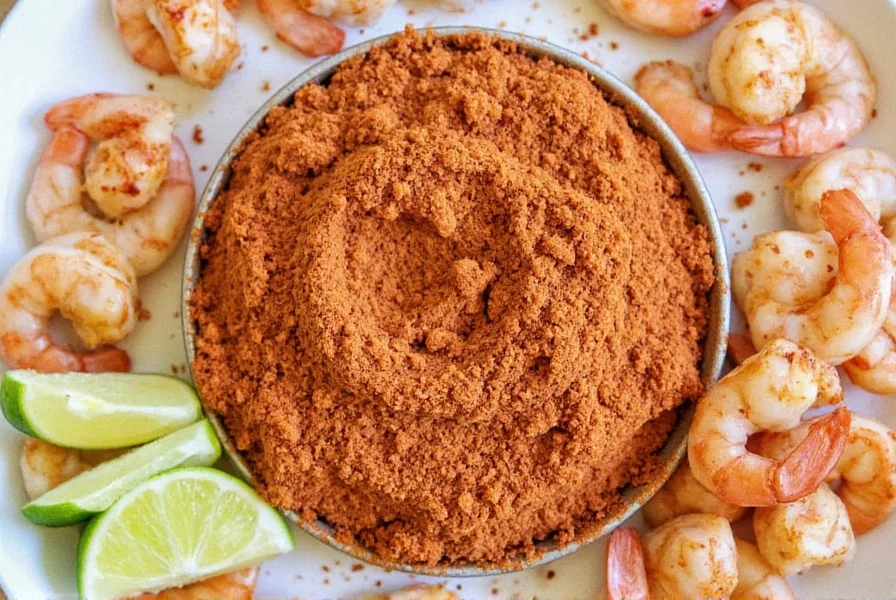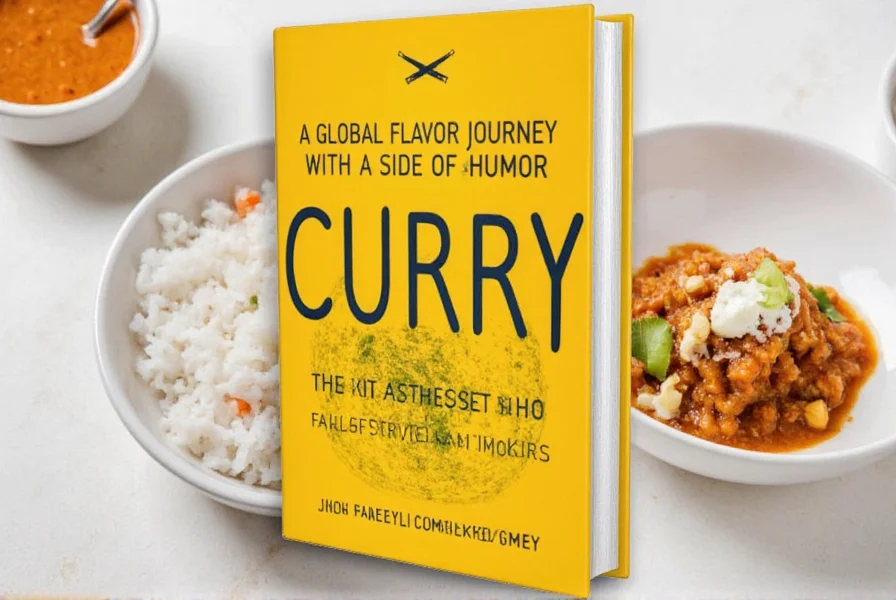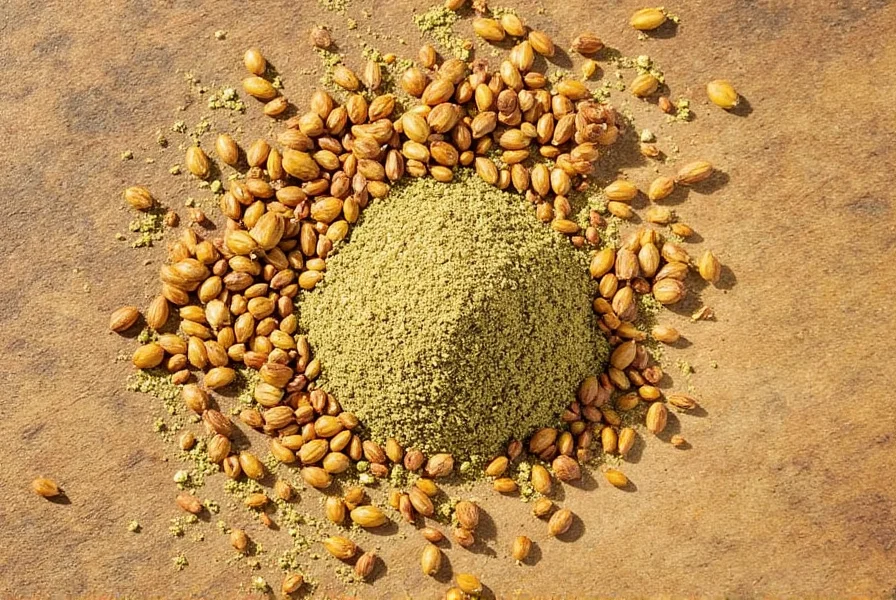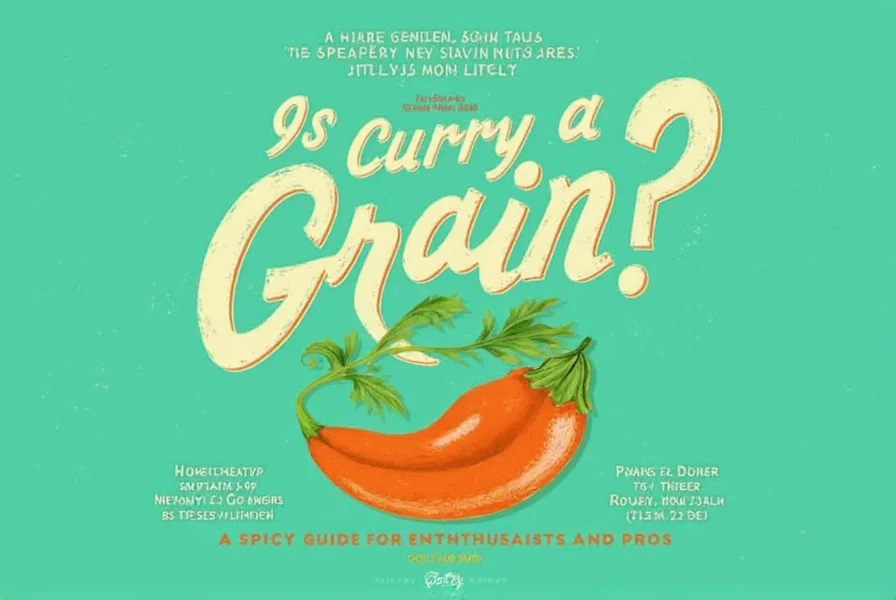Table of Contents
What Is in Curry? The Direct Answer
Curry is not a single spice but a complex blend of spices that varies significantly by region and recipe. The term "curry" refers to a wide variety of dishes and spice mixtures originating from South Asia but adapted globally. At its core, curry blends typically include turmeric, cumin, coriander, and chili peppers, with additional regional spices like cardamom, cloves, lemongrass, or ginger. The exact composition depends on cultural traditions and specific dish requirements, making "curry" a flexible culinary category rather than a fixed ingredient.

Core Spices Found in Curry Blends
The magic of curry lies in its precise spice combinations. Here's an in-depth look at the essential ingredients found in authentic curry blends:
- Turmeric: Provides the characteristic yellow color and earthy flavor. Contains curcumin, which offers anti-inflammatory properties. Quality turmeric should have a vibrant color and strong aroma.
- Cumin: Offers a warm, nutty, slightly smoky flavor. Whole cumin seeds release more flavor when toasted before grinding. Cumin is fundamental to most curry blends.
- Coriander: Adds citrusy, floral notes with subtle sweetness. The seeds are typically used whole and ground fresh for maximum flavor.
- Garam Masala: A warming blend typically containing cardamom, cinnamon, cloves, nutmeg, and black pepper. The exact composition varies by region and family tradition.
- Chili Powder or Fresh Chilies: Provides heat and depth. Different chilies (like Kashmiri for color or bird's eye for intense heat) create distinct flavor profiles.
- Mustard Seeds: Adds pungency, especially in South Indian curries. Yellow and brown varieties have different flavor intensities.
- Garlic and Ginger: Essential aromatics that form the flavor base for many curry preparations. Freshly grated ginger provides more vibrant flavor than powdered.
- Fenugreek: Often overlooked but critical in many Indian curries. Adds a slightly bitter, maple-like note that balances other spices.
- Tamarind: Used in many Southeast Asian and South Indian curries for sourness and complexity. Often in paste or concentrate form.
These spices are combined in specific ratios that vary by region and recipe. Authentic curry blends typically contain 8-15 different spices, with turmeric, cumin, and coriander forming the foundation in most traditional preparations.

Curry Variations Around the World
Curry isn't one-size-fits-all. Different regions have their own distinct versions, each with unique ingredients and preparation methods. Here's a detailed comparison:
| Region | Key Ingredients | Flavor Profile | Authentic Uses |
|---|---|---|---|
| Indian | Cardamom, cloves, cinnamon, cumin, coriander, fenugreek, mustard seeds, turmeric | Rich, aromatic, complex with layers of warmth | Curry dishes like butter chicken, chana masala, and dal |
| Thai | Kaffir lime, lemongrass, galangal, chili, shrimp paste, coriander root | Sour, spicy, herbal with bright citrus notes | Green, red, and yellow curries served with rice or noodles |
| Japanese | Shoyu, miso, ginger, potatoes, carrots, apples, honey | Savory, umami, balanced with mild sweetness | Japanese curry rice, often served with tonkatsu or vegetables |
| Caribbean | Allspice, thyme, garlic, scotch bonnet pepper, nutmeg, cinnamon | Smoky, sweet, fiery with tropical fruit notes | Curry goat, jerk chicken, and vegetable curries |
| Mexican (Tamales & Stews) | Chipotle, epazote, cumin, garlic, oregano, chocolate (for mole) | Earthy, smoky, bold with complex depth | Mole sauces, enchilada fillings, and bean stews |
| British | Curry powder (adapted Indian blend), potatoes, peas, tomatoes | Mild, savory, slightly sweet with tomato base | Chicken tikka masala, korma, and other "curry house" dishes |
This variation shows how the same term "curry" can mean something entirely different based on where you are. The British "curry" is actually a Westernized adaptation of Indian cuisine, while Thai curry is a completely distinct culinary tradition with its own unique ingredients and preparation methods.

Buying Guide: How to Choose the Right Curry
If you're new to the world of curry, choosing the right product can be overwhelming. Here's a comprehensive guide to help you pick the perfect curry for your needs:
Types of Curry Products
- Curry Paste: Ideal for Thai and Southeast Asian recipes. It's concentrated, so a little goes a long way. Look for pastes with visible fresh ingredients (like lemongrass pieces) rather than just powder. Authentic Thai curry pastes should contain minimal preservatives.
- Curry Powder: A dry mix used in Indian and British-style curries. Great for making dishes from scratch. High-quality curry powder should have a vibrant color and strong aroma. Avoid powders that smell stale or have clumps.
- Ready-Made Curry Sauces: Convenient for quick meals. Best for beginners or those short on time. Check the ingredient list for added sugars and artificial flavors. Authentic sauces typically contain recognizable spices rather than "natural flavors."
- Whole Spices: For the most authentic experience, buy whole spices and grind them yourself. Whole spices retain their flavor longer than pre-ground versions. A mortar and pestle or dedicated spice grinder works best.
Features to Look For
- Quality of Spices: Look for fresh, high-quality ingredients without unnecessary fillers. Check the expiration date and smell the product - fresh spices should have a strong, pleasant aroma.
- Heat Level: Some curries are mild, others are fiery. Choose based on your tolerance. Note that "mild" curry powders often contain less chili but more turmeric for color.
- Origin: Regional variations offer distinct flavors. Try a few to find your favorite. Indian curry powders often have more complex spice blends than generic "curry powder" sold in supermarkets.
- Ingredient Transparency: High-quality products will list all ingredients clearly. Avoid products with vague terms like "spices" or "natural flavors" without specifics.
Use Cases & Target Audience
- Home Cooks: Ideal for those who want to experiment with different cuisines at home. Start with simple recipes and gradually build your spice collection.
- Busy Professionals: Ready-made sauces save time and effort. Look for brands that use quality ingredients without excessive preservatives.
- Food Enthusiasts: A great way to explore global flavors and spice blends. Consider purchasing whole spices and grinding them fresh for the best flavor.
- Chefs & Professionals: Seek out specialty suppliers for authentic regional curry pastes and powders. Many professional kitchens use custom spice blends tailored to specific dishes.
Best Occasions to Use Curry
- Dinner Parties: Impress guests with authentic, flavorful dishes. Consider making a signature curry dish that showcases your knowledge of specific regional variations.
- Families: Curries are hearty, comforting, and easy to share. Mild curries work well for children, while adults can add extra heat.
- Weeknight Meals: Quick and easy to prepare with pre-made options. Many ready-made curry sauces can be enhanced with fresh ingredients in under 30 minutes.
- Special Occasions: Complex curries with multiple spices and slow cooking times make impressive centerpiece dishes for celebrations.
Remember, when you ask, "What is in curry?" the answer depends on the type you choose. Always check the label and make sure it aligns with your taste and cooking goals. For the most authentic experience, consider purchasing whole spices and grinding them yourself.

Cooking Tips for Perfect Curry
Whether you're using a store-bought curry or making your own spice blend, here are professional tips to ensure your curry is delicious every time:
- Start with a Base: Sauté onions, garlic, and ginger first to build flavor. For Indian curries, cook until golden brown. For Thai curries, use fresh aromatics like lemongrass and galangal.
- Add Spices Gradually: Taste as you go and adjust the seasoning. Add spices to hot oil to "blooming" them, which releases their full flavor potential. This step is crucial for authentic curry preparation.
- Use Fresh Ingredients: Fresh vegetables, meats, and herbs make a huge difference. For best results, use fresh ginger and garlic rather than powdered versions.
- Let It Simmer: Allow the curry to cook slowly for deeper, richer flavors. Most authentic curries benefit from at least 20-30 minutes of simmering time.
- Experiment with Pairings: Try different proteins, rice, or breads to suit your mood. Indian curries pair well with naan or basmati rice, while Thai curries are best with jasmine rice.
- Balance Flavors: The best curries have a harmony of heat, sweetness, sourness, and saltiness. Add a touch of sugar or honey to balance heat, lime juice for acidity, and fish sauce for umami depth.
- Finish with Fresh Herbs: Add fresh cilantro, Thai basil, or mint at the end for brightness. This step is often overlooked but makes a significant difference in flavor profile.
And don't forget—curry is all about balance. The best curries have a harmony of heat, sweetness, sourness, and saltiness. So play around with your spice levels until you hit that perfect combination. For authentic results, follow regional traditions rather than generic "curry" recipes.
Frequently Asked Questions About Curry Ingredients
What are the main ingredients in curry?
Curry isn't a single ingredient but a blend of spices. The most common ingredients include turmeric, cumin, coriander, garlic, ginger, and chili peppers. The exact combination varies by region and recipe, with additional spices like cardamom, cinnamon, cloves, mustard seeds, fenugreek, and tamarind often included. Authentic curry blends typically contain 8-15 different spices.
Is curry a single spice?
No, curry is not a single spice. The term "curry" refers to a wide variety of dishes and spice blends that originated in the Indian subcontinent but have been adapted worldwide. What Western cultures often call "curry powder" is a British creation that combines multiple spices. Authentic Indian cuisine doesn't use the term "curry powder" - instead, specific spice blends are used for different dishes.
What's the difference between curry powder and curry paste?
Curry powder is a dry blend of ground spices commonly used in Indian and British-style curries. Curry paste is a wet mixture typically used in Thai and Southeast Asian cooking, containing fresh ingredients like lemongrass, galangal, and kaffir lime leaves along with ground spices. Pastes are more concentrated and often contain oil, giving them a longer shelf life. Thai curry pastes also frequently include shrimp paste for umami depth, which is absent in most curry powders.
Are all curries spicy hot?
No, not all curries are spicy hot. While many contain chili peppers, the heat level varies significantly by region and recipe. Japanese curry is typically mild, while some Indian and Thai curries can be very spicy. The term "curry" refers more to the cooking style and spice blend than to heat level. Many Indian curries like korma or butter chicken are intentionally mild, while others like vindaloo are very spicy.
How can I make my own curry blend at home?
Creating your own curry blend is simple! Start with equal parts turmeric, cumin, and coriander. Add smaller amounts of ginger, garlic powder, and black pepper. Then customize with other spices you enjoy - cardamom, cinnamon, or cloves for warmth; chili powder for heat; mustard seeds for pungency. Toast the whole spices first for deeper flavor, then grind them. Store in an airtight container away from light. For authentic results, research regional spice blends specific to the cuisine you're making.
Why does my curry taste bland?
Most often, bland curry results from not properly blooming the spices in oil. Heat oil in a pan, add spices, and cook for 30-60 seconds until fragrant before adding other ingredients. Also, many people don't use enough salt or fail to balance flavors with acidity (like lime juice) or sweetness (like a touch of sugar). Authentic curries often include multiple layers of flavor from different spice stages.
What's the difference between Indian and Thai curry?
Indian curry typically uses dry spice blends and relies on tomatoes, yogurt, or coconut milk for base. Thai curry uses fresh ingredients like lemongrass, galangal, and kaffir lime leaves, and often includes shrimp paste for umami. Thai curries are usually categorized by color (green, red, yellow) based on the chilies used, while Indian curries are named after specific dishes or regions.
Conclusion
So, what is in curry? The answer is as rich and varied as the cultures that create it. From the vibrant spices of India to the tangy flavors of Thailand, curry is a global treasure that continues to evolve. Whether you're a seasoned chef or a curious foodie, there's always something new to discover in the world of curry.
By understanding the key ingredients and learning how to choose and use different types of curry, you can elevate your cooking game and impress your friends and family with every meal. And remember, the next time someone asks, "What is in curry?", you'll be ready to explain the full story—spice by spice, flavor by flavor.











 浙公网安备
33010002000092号
浙公网安备
33010002000092号 浙B2-20120091-4
浙B2-20120091-4